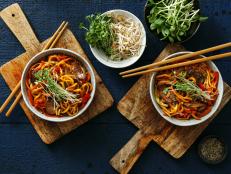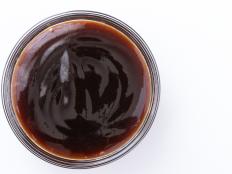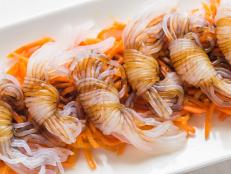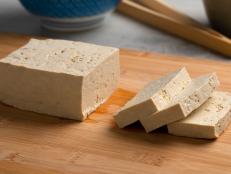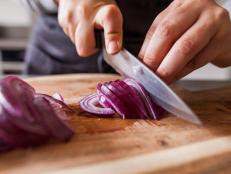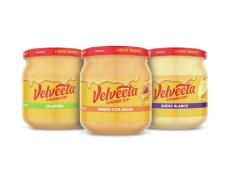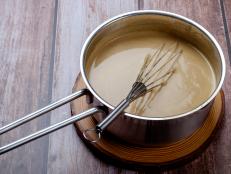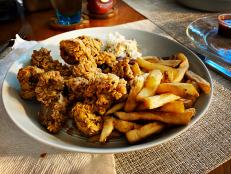How to Make Biang-Biang Noodles From Scratch
Xi’an Famous Foods CEO Jason Wang shows us how to make his restaurant’s signature hand-pulled noodles.

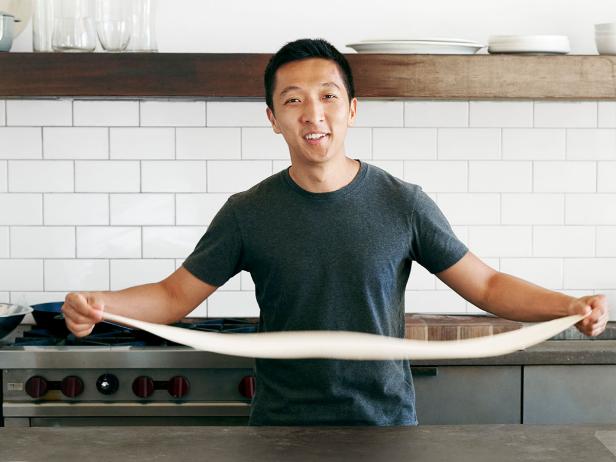
Walk past any of the eight Xi’an Famous Foods in New York City and you’re bound to see a crowd. The restaurants are legendary for their hand-pulled noodles, inspired by the foods of Xi’an, China, where owner Jason Wang grew up. His dad David Shi opened their first restaurant in 2005, and since then the family has introduced thousands of people to Xi’an’s dense, chewy, irresistible noodles. We asked Jason to show us how to make them at home.
Get the Recipe: Hot-Oil Seared Biang-Biang Noodles
Make the Dough:

Place the flour in a large bowl. Dissolve the salt in the water in a measuring cup. Add the salt water to the flour, 1/4 cup at a time, mixing with your hands.

Knead until a dough is formed, 8 to 10 minutes, then remove the dough to a floured board and continue kneading until smooth and springy.

Clean out the bowl, then return the dough to the bowl. Cover with a moist towel and let rest 5 minutes, then knead for a minute or so on a floured board. Repeat this rest-then-knead process twice more.
Roll Out the Dough:

After the final rest and knead, flatten the dough into a rectangle to the best of your ability. Cut the dough into 3 1/2-ounce pieces (about 6).

Use a rolling pin to roll each piece of dough into a flat rectangle, a little over 1/4 inch thick (4 to 5 inches long and 1 1/2 inches wide).

Rub the dough with vegetable oil and place on a plate (don’t stack them on top of one another). Cover with plastic wrap and refrigerate, at least 1 hour or up to 3 days.
Stretch the Dough:

Bring the dough to room temperature. Flatten on a clean counter with your hands until the dough feels stretchy and elastic. At this point you should bring your water to a boil. (See recipe link.)

Evenly press and stretch the dough rectangles into flatter rectangles, about 6 inches long and 3 inches wide.

Grab the ends of a rectangle with your thumbs and forefingers. Stretch the dough gently until shoulder-width long.

Pull and slap the noodle against the counter up and down until the dough is almost 4 feet long. Biang-biang refers to the sound of the noodles hitting the counter as they’re being pulled.
Rip the Noodles:

Pick up the noodle in the middle and rip it into two pieces like string cheese. Pull until you almost reach the end, but don’t pull all the way through.

You’ll end up with a giant noodle ring. Carefully press the ends of the strands
to stretch and even them out if they’re too thick. Pull and rip the remaining noodles.
NOTE: Be careful not to pull the noodles too quickly or grip them too tightly or they’ll break. If a noodle does break, just grab onto the broken part and pull from there.
Dig In:

"These noodles cannot sit after being pulled and are best eaten fresh. Be prepared to immediately boil them, sauce them and slurp them down," says Jason. You can use them to make Jason's signature Hot-Oil Seared Biang-Biang Noodles dish.
To find more recipes like this one, order a copy of Xi’an Famous Foods: The Cuisine of Western China today.
Credits:
Introduction written by Erica Finamore and Paula Mitchell for Food Network Magazine.
All photographs by David Malosh for Food Network Magazine.
Recipe reprinted with permission from XI'AN FAMOUS FOODS: THE CUISINE OF WESTERN CHINA, FROM NEW YORK’S FAVORITE NOODLE SHOP BY JASON WANG WITH JESSICA CHOU. PUBLISHED BY ABRAMS.
Related Links:

























